Last updated on August 11th, 2023
Native to North America, white-tailed deer are not only the most widespread deer species in the continent but also the creatures to be found in the most abundant numbers in America’s woodlands. These shy, attractive, and utterly adorable creatures are highly adaptable by nature and can survive in various habitats. Instantly recognizable by their distinct long tales with a bright white color on the underside (hence the name), whitetails are excellent runners and swimmers and can jump up to 8 feet high—abilities that often come to their aid when fleeing predators.
But what are some other interesting and little-known facts about white-tailed deer? For example, why do baby whitetails have a spotted coat? Or, how and why do female white-tailed deer grow antlers? When do these herbivore creatures resort to eating meat and even human flesh (!)?
How Many Subspecies?
1. White-tailed deer have nearly 38 subspecies!
In Majority?
2. About one-third of all white-tailed deer in the US live in Texas.
The Most Widely Distributed Wild Ungulate
3. White-tailed deer are the most widely-distributed wild ungulate (large mammals with hoofs) in the Americas.
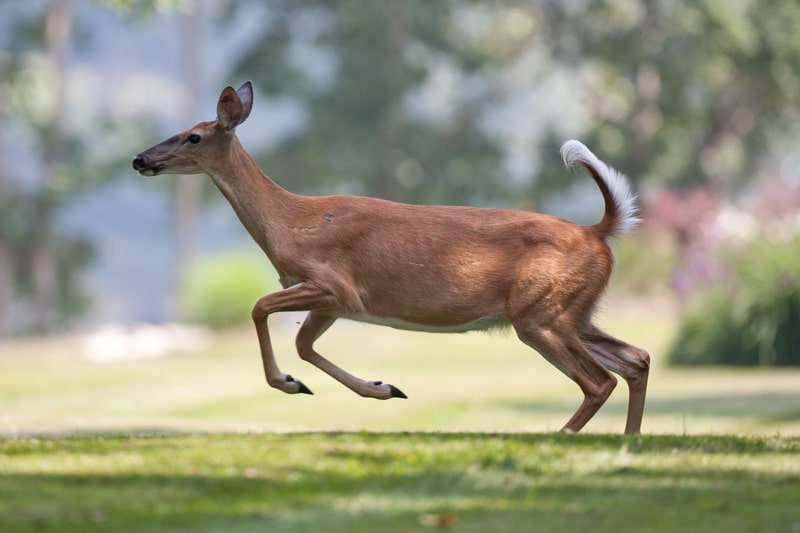
The First Month of Their Lives
4. And talking of mother deer and her fawns, we ought to mention that contrary to what is the case with most animals, fawns do not follow their mother around after birth. For the first month of their lives, the fawns are kept hidden in vegetation when their mother goes away in search of her food.
The Name Comes From?
5. While we are on to facts about white-tailed deer, here is something about their TAIL. To begin with, although they’re named as such, only the lower part of the deer’s tail is white, while the upper section follows the brown/gray of the coat.
The Tail Says Something
6. The tails of the white-tailed deer are also significantly longer than most deer species, and the animals use them for signaling purposes. For example, a deer raises its tail when faced with something threatening. This action, known as “flagging,” communicates the potential threat to other herd members.
Scent for Communication
7. A white-tailed deer can secrete scents from as many as seven parts of its body. These scent glands in a whitetail are found along its hind legs, in its foreskin, its toes, and most prominently, its face. In conjunction with certain calls and sounds, the creatures use the scents for different communication purposes.
White Tailed Deer are Present in Central and North America
8. From Southern Canada to the desert states of the US, white-tailed deer are found in abundant numbers across North America and in many parts of the Central and South Americas.
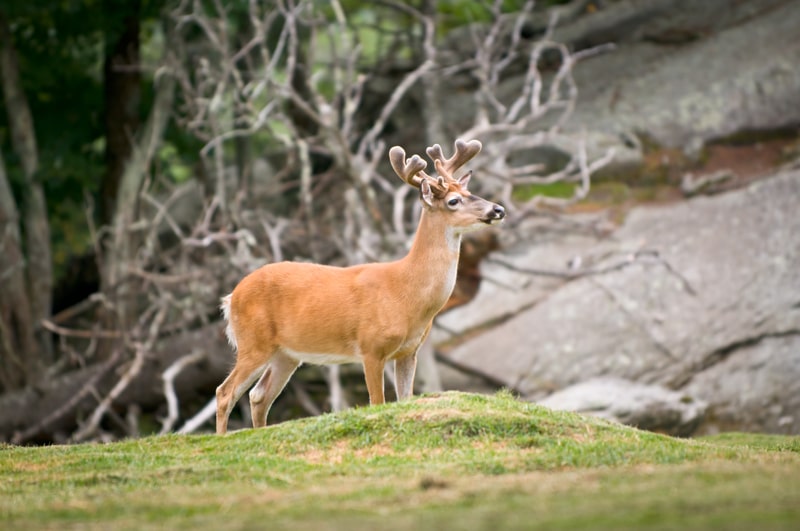
9. Although native to North America, the species has also been introduced to other parts of the world. Accordingly, they are found in good numbers in many European countries, New Zealand, and most Caribbean Islands.
10. White-tailed deer have been recognized as a generalist species (species that don’t require unique conditions for survival), and they can live under pretty much any conditions and in any climate. They prefer to live in environments close to forests, especially habitats consisting of shrubs and dense thickets where they can feed and hide from predators.
How Many?
11. The number of white-tailed deer in the US is estimated to be over 11 million and is steadily increasing. This is the IUCN estimate. Surprisingly, more than a few sources put the number on the north of 30 million!
Impact of Their Dominance in Certain Regions
12. This population boom has caused concerns in certain quarters since the overpopulation leads to conflict with humans and can potentially affect the stability of certain ecosystems. For example, forested areas with not enough large predators are at risk of being too heavily foraged by large numbers of deer.
13. For instance, research has found that in most forests across the northern US, tree seedling decreases significantly at places where the density of white-tailed deer is around 6 individuals per sq. km.
Unexpected Results
14. Ironically, the said over-population results from highly successful preservation programs. Back in 1930 only, the number of white-tailed deer had dwindled to a mere 30,000 due to overhunting (by humans), and the species was in danger of extinction.
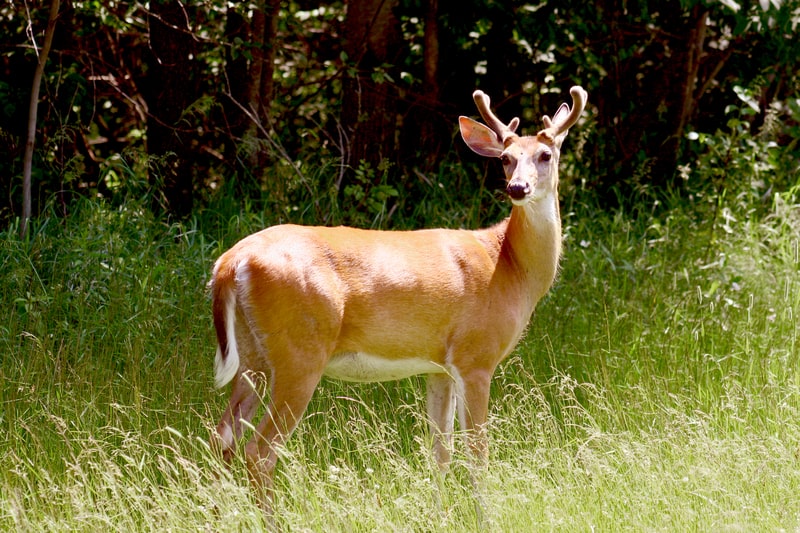
The Lifespan of White-Tailed Deer is Higher in Captivity
15. A white-tailed deer lives in the wild for four to five years. But their lifespan in captivity is 3x higher, meaning they can live up to 14 years! Some scientists believe this is because of the difference in diet and stress.
The Longest Survivor
16. As of now, a doe in Georgia that lived an impressive 22 years is known to be the longest-lived whitetail deer.
17. Recently, deer-vehicle collisions have been one of the top reasons for the death of white-tailed deer.
White-Tailed Deer Are the Smallest North American Deer But Can Weight Up To 300 Pounds
18. White-tailed deer are the smallest of the North American deer family. But they are heavier than an average dog, weighing 100 to 150 pounds. However, a mature deer can weigh anywhere between 200 to 300 pounds.
Disney’s Popular Bambi was Modelled after White-Tailed Deer
19. No list of interesting white-tailed deer facts can do without mentioning Bambi— without a doubt the most famous individual (albeit an imaginary one) in the history of the species. However, the fun fact here is that Bambi was a roe deer (a species of Eurasian deer) in the Austrian author Felix Salten’s novel “Bambi, a Life In The Woods,” and from which the now famous Disney animation was adapted.

20. However, not Walter Disney himself changed Bambi into a whitetail. The credit goes to the famous animator Maurice “Jake” Day, the man Disney had hired for the film. Maurice was so adamant that Bambi would be a whitetail that he made Disney Studios transport two four-month-old whitetail fawns from his home state of Maine to Hollywood!
21. Talking of Bambi, have you ever wondered why whitetail fawns (most species of baby deer) are born with those adorable white-spotted coats? The spotted pattern of the coat helps camouflage the fawns amidst vegetation since those white spots resemble or mimic the sunlight patches that shine through plants and trees.
White-Tailed Deer are Most Active at Dawn and Dusk
22. White-tailed deer have more rods in their eyes than cones. It means they have natural night-vision goggles and are, thus, most active during dawn and dusk.
White-Tailed Deer Aren’t Very Picky
23. White-tailed deer are vegetarians but have a diverse diet. They enjoy more than 600 plants, including acorns, grasses, soybeans, berries, fruit, fungi, and nuts. In addition, their feeding habits shift with the seasons.
The Coats of the Wide-Eyed Deer Changes Color with the Seasons
24. The white-tailed deer changes from reddish brown in the summertime to a dull grayish-brown during fall. The difference in their coat takes only one to two weeks. Moreover, it helps the skittish deer stay camouflaged, protecting it from predators.
White-Tailed Deer Have a Four-Chambered Stomach
25. White-tailed deer can chew and digest thorny vegetation due to their four-chambered stomach. So, the small deer eat quickly without chewing and cough up the food later to chew it. Besides this, white-tailed deer can eat poisonous mushrooms because of their four-chambered stomach.
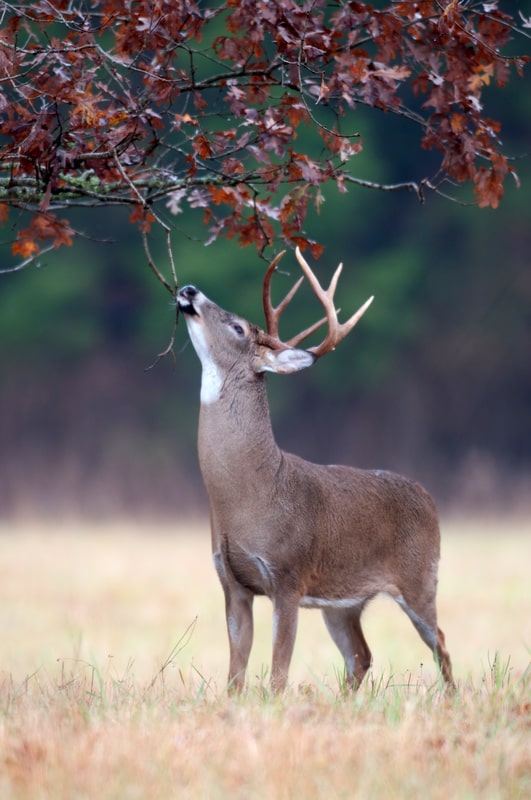
Pay Attention to Their Digestion Process
26. The swallowed food passes through a fermentation stage during the initial digestion process. After this stage, the animals will regurgitate (bring the swallowed food up again to the mouth) this fermented food, known as “cud,” and swallow it all over again for its final absorption into the system.
The Deer Wags Its Tail When It’s Alert
27. You probably know this fact about white-tailed deer: they have a white-colored tail. But you might not know that it’s only colored from the underside. Moreover, the skittish and shy animal wags its tail when anxious or startled.
Not All Bucks Grow Huge Antlers, and Not All Does Lack Antlers
28. Sometimes, white-tailed bucks, called “spiked” bucks, will only grow up to 3 inches of antlers. On the contrary, some female deer will grow antlers due to abnormal testosterone levels.
White-Tailed Deer’s Antlers Harden Due to Calcification
29. White-tailed deer’s antlers develop a highly vascularized tissue in spring and summertime. The velvet dries out with the change in weather, causing the antlers to harden. The hardening of the white-tailed deer’s antlers occurs due to calcification, which happens when testosterone levels skyrocket during fall.
They Have Super Vision and Hearing But Rely on the Sense of Smell to Protect Themselves
30. White-tailed deer have perfectly healthy vision and hearing and can smell miles away. But the deer mainly relies on its sense of smell to survive in the wild. For this reason, many hunters mask their scent before stepping into the woodlands.
White-Tailed Bucks Only Shed Antlers in Spring or Summer If They’re Sick
31. Most white-tailed bucks shed their huge antlers during winter. So, a deer might be sick or diseased if it loses its antlers in spring or summer.
White-Tailed Deer Make Up a Significant Portion of the U.S. Hunting Industry
32. Thousands of hunters visit the Central and North American woodlands yearly to hunt white-tailed deer. The previous year’s harvest resulted in 180,000 to 48,000 kills state-by-state.
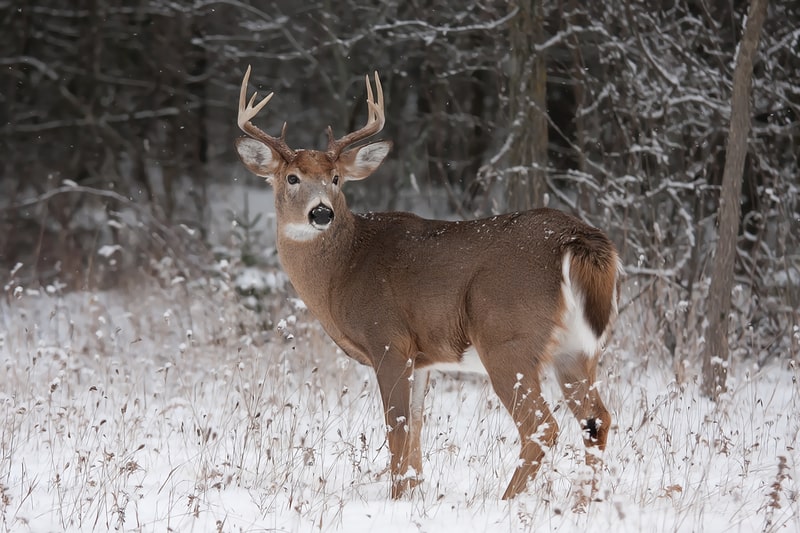
The Adorable Deer is the State Animal of Many States
33. Another surprising white-tailed deer fact is that it is 11 of the 50 U.S. states’ State Animals. The names of such states are Arkansas, South Carolina, New Hampshire, Mississippi, Oklahoma (state’s game animal), Pennsylvania, Wisconsin (state’s wildlife animal), Ohio, Michigan, Nebraska, and Illinois.
White Tailed Deer Can Jump Over eight Feet and Run 30 MPH
34. White-tailed deer can bound a stunning 30 miles per hour and jump fences up to 8 feet tall. Research in the Journal of Wildlife Management found biologists witnessed deer jumping 7.87-foot fences!
White Tails are Slightly Colorblind
35. It’s true: the white-tailed deer sees red, green, and orange as gray. That is why many hunters getaway in the wild by wearing orange and green vests.
White Tailed Deer are Essential Prey Animals
36. While hunting white-tailed deer is prevalent, the mammal also faces other predators like wolves, bears, coyotes, mountain lions, and jaguars.
The predator-prey relationship comprising white-tailed deer is crucial for the local food chain and promotes the survival of healthy animals.
You Might Never See a White-Tailed Deer Antler
37. You’ll rarely see white tails shed antlers because rodents and small animals enjoy feeding on them. Why? The buck’s antlers are rich in calcium, among other nutrients.
. . . continue reading on the next page
